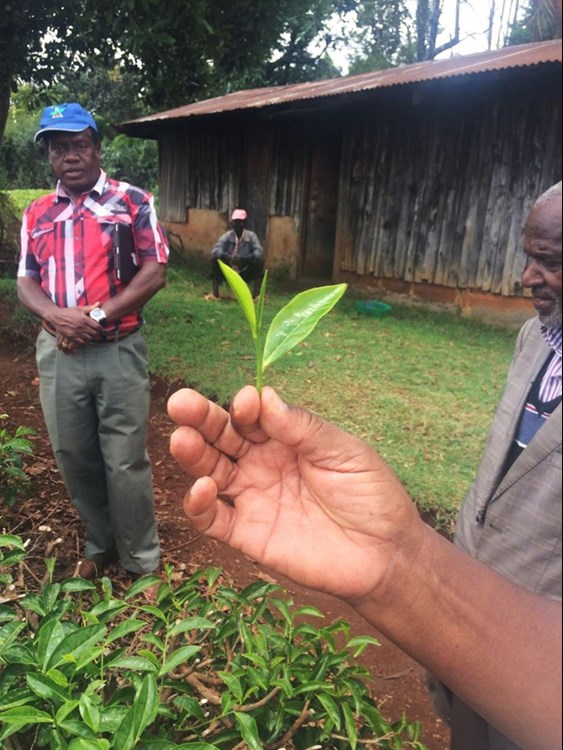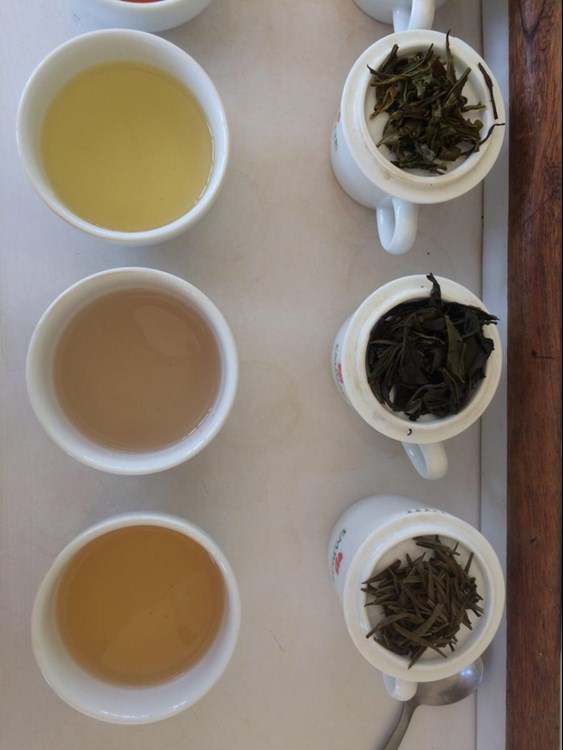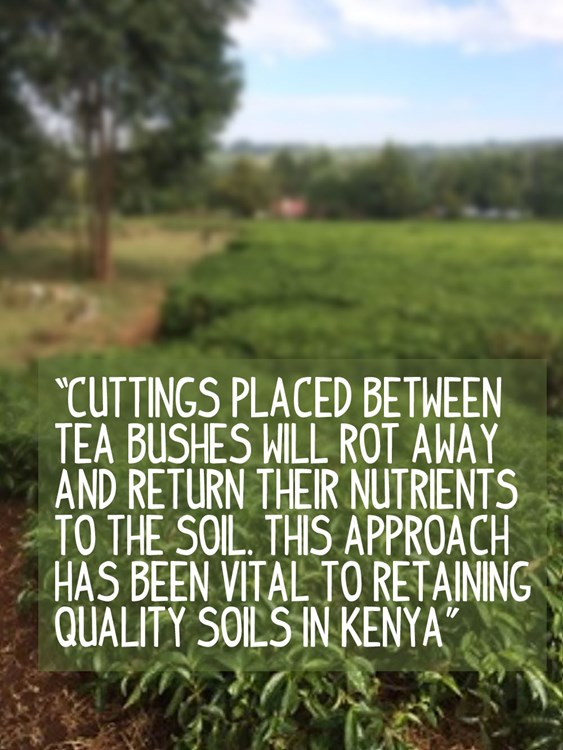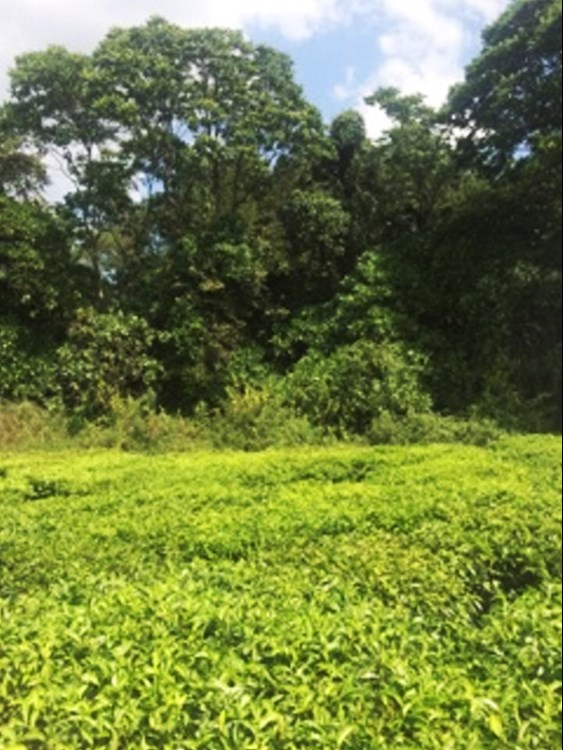Terroir And The Science of Taste
Terroir. A word synonymous with wine and one we have become more familiar with in recent years through discussions on cheese, chocolate, coffee and tea to name a few. Simply put, terroir can be described as the complete natural environment in which a product is grown. The categories that make up terroir are numerous (latitude, altitude, biodiversity, local ecosystem, water etc.) and for us as tea merchants many hours are spent in gardens around the world observing, questioning, learning and tasting how the environment the tea has grown in and the decisions made during cultivation impact the final flavour in our cup. Last year having returned from our travels, we found ourselves continually returning to one particular topic - soil.

There is no doubt that consumers in the UK are more aware and engaged on the topic of soil than ever before but for products from outside the UK it is often very difficult to gain transparency on soil practices or indeed understand how soil variation impacts the end product. Although organic certification is available, we have observed that many of the smaller farmers we work with choose not to pursue this - even though they adhere to and follow organic principles. Reasons for this vary but in most cases it has to do with cost and complexity versus scale and return on investment. As a result, there is often no way for their efforts in sustainable soil management to be recognised by consumers. We would like to change that, so, as a first step, we have teamed up with the Soil Association to bring you a series of short articles focused on soil (but also looking at terroir more broadly) across the main tea producing areas we visit. The content will vary each month from broad focus on soil types found in particular countries to specific grower stories and opinions on soil.
This month we are focusing on a country Rob visited back in February - Kenya. In reality many of us are probably not aware just how much Kenyan tea we consume - lower grade CTC (Cut-Tear-Curl refers to the method of tea production used to produce commercial tea bag grade tea) is a major constituent of tea bags - but if the Kenyan tea was taken out tea drinkers would undoubtedly taste the difference. Kenya's tea growing regions are known for their tropical, volcanic red soil plus a rainfall that is usually consistent - these factors combine to create very favourable growing conditions producing distinctive teas valued for their strong flavour, aroma and bright liquor colour. Our trip this year was to search for high grade orthodox leaf teas from smaller producers - and our motivation for seeking these out was all about this distinctively ‘Kenyan’ flavour.

Let’s delve a little deeper into the history of tea in Kenya and the relationship between tea growing areas and soil quality. A major controller of where tea is grown in Kenya is down to the ‘Brown Lines’. In 1966, the first suitable areas for tea growing were delineated by this term. These were based on annual rainfall (1270-1397mm) and distribution, cloud cover and humidity, temperature, soil acidity (pH 4.5-5.8), soil depth and indicator plants. The demarcation is found in and around the highland areas on both sides of the Great Rift Valley and astride the Equator within altitudes of between 1500m and 2700m above sea level - it was stated that tea could be grown above these lines but not below. Of course soil conditions in this area were ideal when the first Kenyan tea crops were planted but how have they been maintained? This is where the approach of individual farmers starts to make a difference.
The first area to look at is maintaining the pH values in the soil (pH is the unit used to measure how acidic or alkaline something is). Many of the tea plants that exist in Kenya today were planted over 70 years ago as the tea fields developed. These plants now offer a very low yield but they also lower the pH of the soil. The ideal is a pH of 4-7, meaning that lime often needs to be added to raise the pH to the correct level. This obviously needs training and close control to achieve the right balance. Replanting is another option but good soil preparation is needed as haste will not pay off in the long term. For farmers looking to either plant for the first time (as more small farmers diversify into tea) or replant there are two particular areas of focus highlighted to Rob. The first relates to previous land use for new tea farmers. When the land has previously been used for cattle, the dung deposited over many years means tea plants do not grow properly and will eventually die. Rob was advised that a specific cultivator of tea plant should be used that is able to cope with these specific soil conditions. The second point is about land clearance - the failure to remove previous plant roots poses a significant threat to plant growth and tea quality in the form of Armillaria root rot - a major cause of tea bush death. The only way to remove this problem is to remove every plant in the area and thoroughly clear the soil. Travelling through tea country Rob observed areas of land where these preparation steps had not been observed or actioned. Empty patches or dead plants in tea fields were clear to see - a very visible marker of tea gardens that weren’t prepared properly or invested in.

One area where Kenya has been successful is in its pruning regime. In Kenya this has been implemented countrywide. Every four years tea bushes are pruned quite considerably by around 6 inches - an important first step - but it is what happens to the cuttings that will determine the maintenance of soil quality. In many other countries and especially on large scale tea gardens this debris would be removed and burnt - on the small holdings we visited we discussed and observed how, the cutting placed between the bushes will eventually rot away and return their nutrients to the soil. Maintaining this approach in Kenya has been vital to retaining quality soils.
A final and important observation is that a great deal of the tea estates in Kenya are Rainforest Alliance certified. One particular small producer we visited this year showed the value of applying the Rainforest Alliance principles to tea farming. This smallholder’s land sloped down to a marsh area and a river. What was particular impressive about this particular farmer and his approach is that he decided to keep the thick belt of indigenous forest at the bottom of his land. According to him, this has meant a considerable difference to his tea crop in comparison to his neighbours, who cleared the forest for grazing. The trees slow water run-off to the river, benefiting the tea plants’ growth, which was especially important after the extended dry period Kenya has suffered this year. The indigenous forest is also of huge benefit to the wildlife and ecosystem of the area.

As we travel around looking for great teas to add to our collection we are continually looking for visible signs of good farming practice. We are also aware that some indicators are hidden so we always have our questions ready for the growers we visit. Ultimately the terroir will determine the tea profile - there is nowhere to hide once the tea is in the cup. We can’t wait to bring a new collection of Orthodox Kenyan teas to Comins in the next few months.
As part of our partnership with the Soil Association we are inviting 6 people to become tea tasters and experience just how diverse and wonderful the world of fine tea is. Just drop us an email at hello@cominstea.com and we will send you samples of tea from the countries we profile over the next few months along with a tasting card for your comments. We will share your comments alongside our articles and through the Comins Tea pages.

